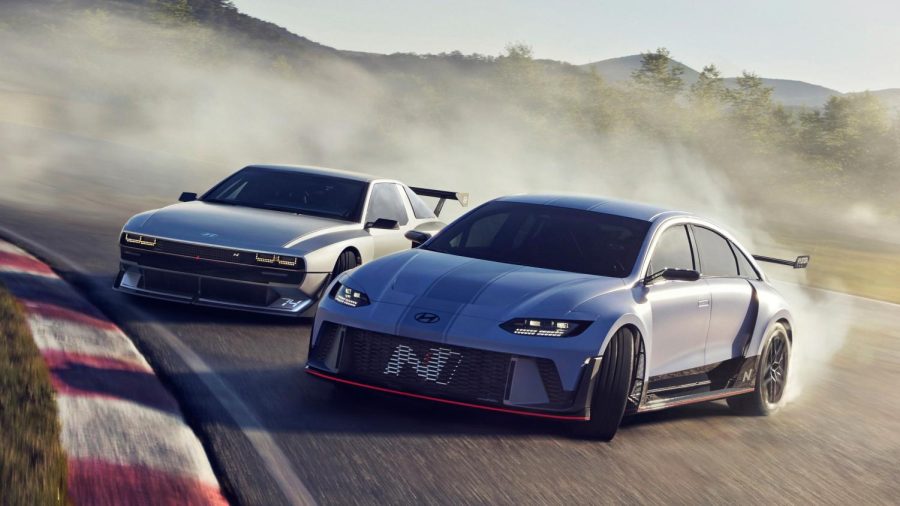The Electrifying Future
Hyundai is one of many companies redesigning the future of cars to entice consumers
Photo courtesy caranddriver.com
Hyundai plans to release the Ioniq RN22e and N vision 74 concepts in 2023.
September 12, 2022
The global electric revolution of the automotive industry is on the rise, as the government and companies continue to entice consumers to make the transition to electric vehicles (EVs). This transition has rapidly turned into a long-term goal of mitigating the climate crisis and reducing society’s carbon footprint. California is the first state to ban the sale of gasoline cars by 2035 and many states look to follow. The United States looks to have over 70% of cars on the road by 2050 to be fully electric.
Consumers look forward to the future as the industry’s shift welcomes futuristic vehicle designs in which engineers are completely rethinking the structure of vehicles to accommodate the needs for an electric vehicle to run efficiently. This ability to remodel vehicles around the new electric motor allows for significant modifications that ultimately improve luxury, performance and safety. Additionally, the modern technology installed in the new fleet will transform the way society drives with the introduction of the autonomous driving system. The new autonomous driving system is expected to make the operation of roadways in United States more efficient as it will reduce traffic, the number of accidents and risky driver behaviors.
The conversion is unlikely to change in the foreseeable future as auto manufacturers such as Hyundai, General Motors and Audi are taking a lead over competitors by planning to only make electric model launches in the forthcoming years. However, auto manufacturers, including General Motors, have specifically electrified some of their cars with a long history and the reaction by the public was unenthusiastic since they want to redesign cars rather than launch new models.
Nick Tipton (12) likes the American sports sector of vehicles that include the likes of the Ford Mustang, Dodge SRT and Chevrolet Corvette, however, thinks the companies shouldn’t electrify them.
“I like electric cars, but I don’t think that they should redesign cars with so much history. I’m not a fan of redesigning cars like the Dodge SRT just so that they still appeal to buyers because a car like that has so much character and brings excitement from its distinctive HEMI engine,” Tipton said.
Although consumers can be split on the designs of electric cars, the tax credits and waived fees for potential EV buyers granted by the government have helped keep some interested by the savings. The most well-known program funded by the federal government consists of a $7,500 tax credit, however most buyers are unaware of these benefits.
According to businessinsider.com, “The Consumer Reports survey found that nearly half of Americans aren’t aware of incentives for EV purchases.” This program is one of the many investments the United States government has implemented from their $174 billion infrastructure plan for electrification. The proposal by the Biden administration is to produce a greener public transportation system and replace the existing federal vehicle fleet for EVs. The carbon tax approved by Congress is anticipated to alleviate the oil industry’s struggle to maintain supply as the government becomes more strict regulations for vehicle operation and manufacturing.
Payson Valinski (11) thinks the concept of electric cars is interesting and is in awe of how they all vary in designs.
“I think car manufacturers are finding more ways to improve efficiency and battery life of electric cars which will enable them to become serious options in the market for vehicles. So, it’s pretty cool to see a sneak peak of the future of all cars right in people’s front yards,” Valinski said.





